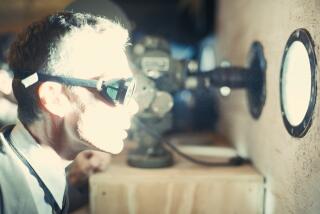TV REVIEW : Discovery Mission: O-Rings to Astronauts
- Share via
Before Challenger blew up in 1986, space shuttle flights had become so boringly automatic that more media attention was being given to the civilian passengers aboard than to the nuts and bolts of the engineering miracle involved.
But for Thursday morning’s planned launch of the shuttle Discovery, all eyes--media and otherwise--will be on the now infamous O-rings, the fragile rubber gaskets whose failings brought down Challenger.
You can see Discovery’s new and improved O-rings actually being installed in “Mission of Discovery,” PBS’ hourlong documentary tonight about the long preparations for the first post-Challenger shuttle mission (7 p.m. on Channel 24, 8 p.m. on Channels 15 and 28, 10 p.m. on Channel 50).
And though it delivers lots of shuttle data and nicely explains some of the 145 design changes that engineers have made on the shuttle, from new survival spacesuits to redesigned solid rocket boosters, the program really revolves around humans--Discovery’s five-man crew.
With the ghost of Challenger providing the extra dramatic thrust for an 18-month diary of delays and frustrating postponements, the veteran crew is seen both at their homes and at work. They show up at motivational meetings with ground crews and visit TRW’s satellite labs. They test new “escape modes” and train for days on flight simulators for every conceivable simulators--what correspondent James Reston Jr. calls an “endless rehearsal for the unthinkable--one failure piled upon another.”
Though they insisted on being consulted on all of the engineering changes, the likable all-American crew members are as confident as test pilots. When they’re interviewed about their thoughts and fears, they are neither profound nor philosophical. They’re just a bunch of hard-working, super-competent, can-do guys eager to get a job done.
“Mission of Discovery,” which was co-produced by Reston and William Cran in cooperation with WETA in Washington, isn’t interested in criticizing NASA, its policies or its contractors. Its goal was to document--and personalize--the long, difficult countdown to Discovery’s launch, which it has done intelligently and engagingly.
More to Read
The complete guide to home viewing
Get Screen Gab for everything about the TV shows and streaming movies everyone’s talking about.
You may occasionally receive promotional content from the Los Angeles Times.






